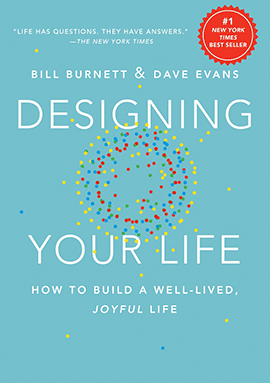Today, a common belief about education and employment is that many of today’s students are training for jobs that don’t yet exist. Fortunately, the people who practice UX and design skills are well versed in defining the future. UX professionals apply UX and design methods to Web sites, mobile apps, software, products, and services to discover new opportunities, eliminate users’ painpoints, and reduce business risk. Consequently Bill Burnett and Dave Evans, the authors of Designing Your Life: How to Build a Well-Lived, Joyful Life, ask: why not apply these methods to our lives?
Book Specifications
Title: Designing Your Life: How to Build a Well-Lived, Joyful Life
Authors: Bill Burnett and Dave Evans
Formats: Kindle, Hardcover, Audiobook, Audio CD
Publisher: Knopf; First edition
Published: September 20, 2016
Pages: 272
ISBN-10: 1101875322
ISBN-13: 978-1101875322
Different Types of Problems
Organizations ask UX professionals to solve problems. Of course, a fundamental question is: are we solving the right problems? To understand what you want to change in your life, it helps to understand what problem you are trying to solve.
It is also important to understand what problems are not solvable. Designing Your Life identifies such problems as gravity problems—problems that cannot be solved for a variety of reasons. Perhaps they are structural problems. For example, it is a virtual certainty that, given my age and lack of a PhD, I will never become the president of a reputable university. It would simply take too long to earn the credentials, achieve tenure, and survive the politics of administrative assignments, then have the luck necessary to become the person who wins a position for which there are very few openings. Or perhaps, being middle-aged and 5’8”, I must let go of my dream of being a star in the NBA.
Just as water finds its own level, you can get to a better place simply by realizing what you cannot overcome. We can make do or find alternatives. So, rather than being unhappy that I’ll never be President Woods, I could work in a different industry. Rather than wishing I was taller, I could still enjoy basketball by volunteering as a coach for my kid’s team or play basketball with friends at the gym.
Where Are You Going?
But, before you can change your direction, you have to know where you are. In their book, Burnett and Evans provide a method for evaluating how things are going. They offer a way to determine what parts of your life are working well—your health, work, play, or love life—and identify what aspects of your life might need a bit more attention or be missing altogether.
Then the authors describe how to create a compass for establishing the direction your life should take—your true North—and to help keep you moving in a direction that supports your goals and values.
 Are you happy with how things are going in your life? Are you doing the work you thought you would be doing; living the life you hoped you would? Did the plans you set for yourself in the autumn of your senior year of high school work out?
Are you happy with how things are going in your life? Are you doing the work you thought you would be doing; living the life you hoped you would? Did the plans you set for yourself in the autumn of your senior year of high school work out?